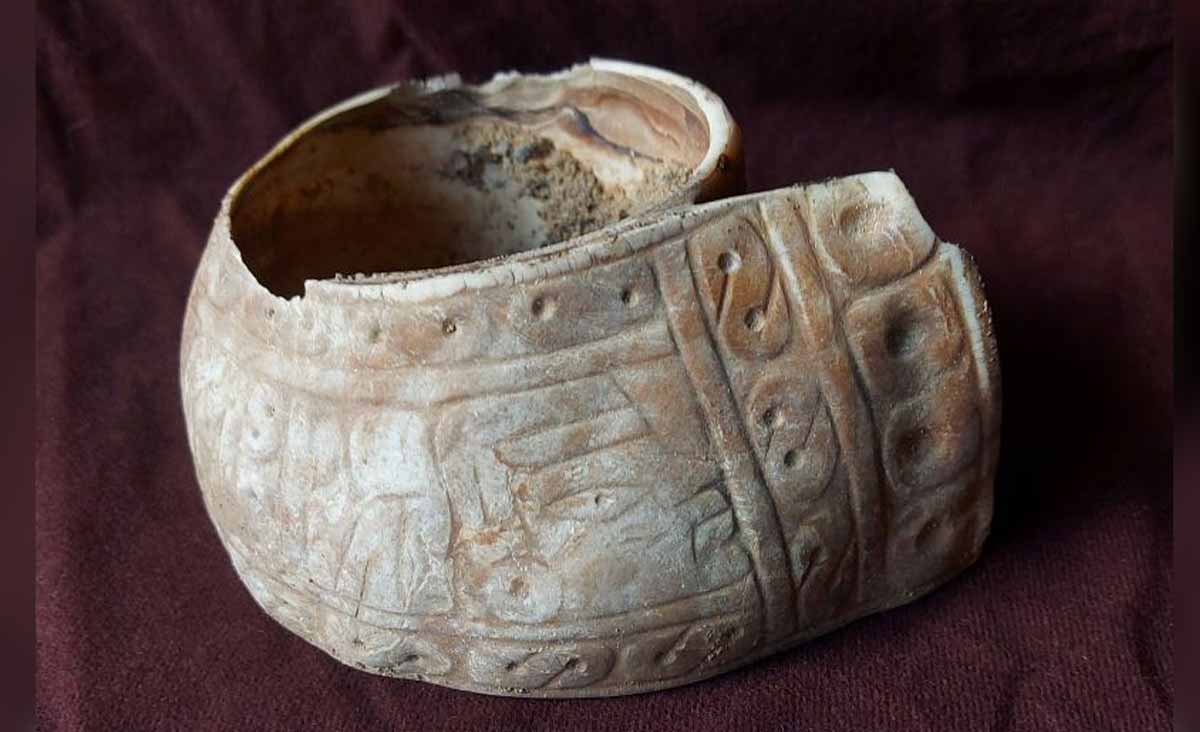What began as an exploration into trash found in Mexican cave turned into an archaeological thrill beyond any expectation.
A misleading clue: trash found in Mexican cave becomes ancient treasure
Deep among Guerrero’s rugged peaks, Russian speleologist Ekaterina “Katiya” Pavlova and local guide Adrián Beltrán Dimas squeezed through a passage no wider than a man’s shoulders. The narrow limestone corridor led them to a tiny chamber where they spotted what looked like debris. Plastic wrappers? Metal scraps? Pavlova felt a flicker of annoyance. She’d spent years mapping untamed caverns, and here was a jumble of modern refuse, so she thought. A closer look revealed spiral shell bracelets, carved stone disks, and a massive snail shell, all neatly arranged around small stalagmites.
Goodbye Pepsi: Costco makes a major decision that completely changes its strategy with sugary drinks
How detonating a nuclear bomb could protect planet Earth
That odd collection shattered any assumption of trash. They hauled mud-caked specimens to the light and realized they’d stumbled on relics. The site sits more than 2,300 meters above sea level, where locals once gathered guano but never ventured this deep. Pavlova dove under a submerged opening to prove the way, breaking her breath on the other side. Beltrán followed, silent with anticipation, until the chamber’s low ceiling opened above a silent tableau of ancient objects. Phone calls crackled through the mountains until Instituto Nacional de Antropología e Historia teams arrived in March 2025. Under flickering headlamps, archaeologists Miguel Pérez Negrete and Cuauhtémoc Reyes Álvarez cataloged each piece. Historians from the Universidad Autónoma de Guerrero lent context. Every measurement, every photograph chipped away at the mystery, turning what once seemed like trash into a trove of forgotten history.
Echoes of rituals and symbols
Four bracelets caught immediate attention; three bore delicate incisions, one looping around a small stalagmite like a silent sentinel. Those spiral motifs hinted at rituals linked to time and Venus cycles. One bracelet etched a human figure, perhaps a god or ancestral spirit. Alongside these lay two intact stone disks and shards resembling pyrite mirrors. One giant Strombus shell glowed with carved patterns and tiny perforations. A carbonized wood fragment, no bigger than a thumbnail, rounded out the group. All items nestled around naturally sculpted stalagmites noted for their phallic shapes. That setting suggested fertility rites, echoing Mesoamerican beliefs that caves represent the underworld’s womb.
No golden masks or elaborate murals here, just humble, carefully placed tokens from a people who left few written records. The Tlacotepehua, metalworkers from colonial-era accounts, might have sought the cave’s hush for sacred ceremonies. As candlelight flickered across stone walls, researchers felt a connection to those long-gone practitioners. Each artifact seemed to whisper stories of dawn rituals and offerings to earth deities. When one mirror shard caught a stray beam, it glinted like a memory surfacing from darkness. This wasn’t casual abandonment. It was a deliberate act of devotion, frozen in time by stable humidity and sealed passages.
Guardians of the past
These objects date to between 950 and 1521 A.D., a timeline that slots neatly into the Postclassic era. Historical notes describe the Tlacotepehua as a Tepuzteca branch living in highland strongholds. Spanish settlers later displaced them, planting Nahua-speaking families nearby. Unearthed iconography mirrors finds at El Infiernillo and other Huasteca sites, stitching the cave into a broader Mesoamerican tapestry. It took INAH’s cartographers weeks to map Tlayócoc fully—nearly 252 meters of twisting corridors, often submerged by trickling streams. A century of sediment barely shifted the cave’s profile, preserving the arrangement inside. Locals now patrol the perimeter, alerted to more than just guano harvest.
Buys a coal mine for $2 million and discovers metals worth up to $36 billion
If you remember these 10 moments from decades ago, your memory is sharper than most in their 70s
Collaborations with ejido leaders turned villagers into unwitting guardians of these relics. Workshops and talks forged a shared sense of pride. Steep fines and patrols deter looters, but real protection comes from community vigilance. When a curious teenager spots a stray artifact, he alerts the authorities. Researchers plan further studies, aiming to decode those spiral motifs and chart connections across Guerrero’s highlands. Every discovery here matters. Each careful excavation piece breathes life into a culture once erased from history books. What began as a simple hunt for trash turned into proof that silence can hold epic tales. Echoing footfalls in that hidden chamber remind us that the Earth still guards secrets, waiting for explorers bold enough to follow faint echoes of the past.
